Are you tired of investing in Pay-Per-Click (PPC) campaigns that don’t yield the desired results? Don’t worry, you’re not alone—and we got you covered.
PPC advertising can be a highly effective way to drive traffic and conversions, but it requires meticulous planning and continuous optimization.
To help you navigate the complexities of PPC, we’ve compiled the ultimate optimization checklist with 15 essential tips.
From keyword research to ad copy and landing page optimization, let’s explore the key tactics to boost your campaign’s performance and achieve tangible, measurable success.
1. Start with a Solid Keyword Research
Before launching your PPC campaign, conducting thorough keyword research is paramount. Start by understanding your target audience and their search behavior.
Use PPC optimization tools like Google Keyword Planner to identify relevant keywords, consider search volume and competition, and uncover valuable long-tail keywords that might be less competitive but highly targeted.
2. Refine Your Ad Copy and Messaging
Refining your ad copy and messaging is an ongoing process. Continuously analyze the performance of your ads and make data-driven adjustments to improve click-through rates (CTR), conversions, and overall campaign success.
It helps to stay relevant and aligned with your audience’s preferences, ensuring your PPC efforts yield the best possible results.
To refine your ad copy and messaging for optimal performance, follow these steps:
- Conduct A/B testing: Create multiple versions of your ad copy with different headlines, descriptions, and CTAs.
- Address pain points and benefits: Craft ad copy that addresses these pain points and highlights the unique benefits of your products or services, showing users how your offering can solve their problems.
- Use action-oriented language: Incorporate strong action verbs and persuasive language to prompt users to take immediate action.
3. Optimize Landing Pages for Relevance and Conversion
Align the landing page content with your ad’s messaging and keywords to provide a consistent experience. Keep the layout clean, highlight the main benefits, and incorporate a prominent call-to-action (CTA) to encourage conversions.
Additionally, ensure the page loads quickly and is mobile-responsive to cater to users on various devices.
4. Set Up Conversion Tracking
By implementing conversion tracking codes, you can track user actions after clicking on your ads, such as form submissions, purchases, or sign-ups.
This data provides valuable insights into campaign performance, allowing you to effectively identify high-performing keywords and optimize your budget.
Conversion tracking empowers you to make data-driven decisions, refine your strategies and maximize your return on investment (ROI).
5. Employ Ad Extensions for Enhanced Visibility
Ad extensions expand your ad’s visibility and provide more valuable information to users. Utilize site link extensions to direct users to specific pages on your website, enabling them to find what they need quickly. Implement call extensions to encourage direct calls from interested customers.
Use location extensions to display your business address and increase foot traffic to physical locations. Ad extensions enhance your ad’s appearance, increase CTR , and improve overall ad performance in search engine results.
6. Bid Management and Budget Optimization
Effective bid optimization and budget management are essential for maximizing the ROI of your PPC campaigns. Monitor keyword performance and adjust bids based on conversion data and cost-per-click (CPC) metrics.
Focus higher bids on top-performing keywords to maintain competitive positions and drive quality traffic. You can also set daily or campaign-level budget caps to prevent overspending and allocate resources to the best-performing campaigns.
7. Utilize Ad Scheduling
Ad scheduling, also known as dayparting, allows you to control when your ads appear to your target audience.
By utilizing ad scheduling, you can:
- Optimize for peak hours: Schedule your ads to appear during specific times or days of the week when your target audience is most active and likely to convert.
- Save on budget: Limit ad exposure during low-converting hours to prevent wasting your budget and focus on the most lucrative time slots.
- Improve campaign efficiency: Tailor ad scheduling to coincide with your business’s operational hours or when customer support is available, ensuring a seamless user experience.
8. Implement Geographic Targeting
Geographic targeting is a powerful tool for tailoring your PPC campaigns to specific regions, cities, or countries. By narrowing your audience based on location, you can focus your ad spend on areas where your products or services are most in demand, ensuring you reach the right customers at the right time.
Whether a local business targeting nearby customers or a global brand seeking regional relevance, geographic targeting empowers you to maximize your campaign’s impact and deliver more personalized messages to your target audience.
9. Optimize for Mobile Devices

With the increasing number of users accessing the internet and conducting searches on their smartphones and tablets, ensuring a seamless mobile experience is paramount.
Mobile PPC campaign optimization involves:
- Creating mobile-friendly ad formats
- Responsive landing pages
- Fast-loading content to cater to on-the-go users
By providing a smooth and user-friendly mobile experience, you can increase engagement, improve CTRs, and drive more conversions, ultimately maximizing the success of your PPC campaigns.
10. Continuously Monitor and Analyze Performance
Regularly track CTR, conversion rates, cost per conversion, and overall campaign spending. By keeping a close eye on these metrics, you can identify trends, spot areas for improvement, and make data-driven decisions to optimize PPC campaigns further.
A/B testing different ad variations, landing page layouts, and targeting options can help you understand what resonates best with your audience and fine-tune your strategies accordingly.
Staying vigilant in performance analysis ensures that your PPC efforts remain effective, relevant, and responsive to changes in user behavior and market trends.
11. Implement Ad Group Segmentation
Implementing ad group segmentation is a fundamental PPC strategy that can significantly improve the performance and relevance of your campaigns.
By organizing your keywords into smaller, more targeted ad groups, you can deliver highly relevant ads to specific audience segments. This approach allows you to tailor your ad copy and landing pages to accurately match users’ search intent.
Moreover, ad group segmentation enables you to monitor the performance of individual keywords closely, make data-driven adjustments, and allocate your budget more efficiently. With a well-structured ad group setup, you can enhance your click-through rates, improve your Quality Score, and ultimately boost your conversion rates, maximizing the overall impact of your PPC efforts.
12. Negative Keyword Management
Negative keyword management is a vital aspect of PPC optimization that can save your budget and improve campaign relevancy.
Identifying and adding negative keywords to your campaigns, you prevent your ads from appearing for irrelevant searches. This strategy ensures your budget is allocated to more relevant queries and reaches your target audience more effectively.
By excluding unrelated searches, you increase your ads’ overall quality and relevancy, which can lead to improved click-through rates, higher Quality Scores, and reduced CPC.
13. A/B Test Ad Variations

By creating multiple versions of your ads and testing them against each other, you can identify the most effective ad elements, such as headlines, ad copy, images, or calls-to-action (CTAs).
A/B testing provides valuable insights into your audience’s preferences and helps you make informed decisions to optimize your PPC campaigns.
By continually refining your ad variations based on performance data, you can improve CTRs, increase conversion rates, and ultimately enhance the overall effectiveness of your PPC advertising.
14. Optimize Quality Score
Quality Score is determined by ad relevance, CTR, and landing page experience.
To optimize your Quality Score, create highly relevant ad copy that aligns with your target keywords and landing page content. Improve your ad click-through rates by crafting compelling and engaging ad copy that resonates with your audience.
Optimize your landing pages to provide a seamless and valuable user experience. By prioritizing Quality Score, you can improve your ad rank, reduce your CPC, and achieve better ROI for your PPC campaigns.
15. Stay Up-to-Date with PPC Trends and Best Practices
Staying informed about the latest PPC trends and best practices is crucial for maintaining a competitive edge and maximizing the success of your digital advertising efforts.
The world of PPC is constantly evolving, with new technologies, consumer behaviors, and platform updates shaping the landscape.
By staying up-to-date, you can adapt your strategies to align with industry changes and ensure your campaigns remain effective and relevant.
Here are some pay per click optimization best practices and trends you can adopt:
- Audience Targeting: Leverage audience targeting to reach specific demographics or remarket to users who have previously engaged with your ads. Utilizing audience data allows for more personalized messaging and increased conversion potential.
- Video Advertising: Incorporate video advertising into your PPC campaigns to engage users with dynamic and visually appealing content. Platforms like YouTube and social media offer great opportunities for video ads.
- Voice Search Optimization: With the rise of voice assistants and smart speakers, optimize your PPC campaigns for voice search queries to capture a growing segment of users who prefer hands-free interaction.
- AI and Automation: Embrace artificial intelligence and automation tools to optimize your bids, ad placements, and targeting, allowing for more efficient campaign management and improved ROI.
By closely monitoring these best practices and trends, you can adapt your PPC strategies to stay ahead of the competition and achieve remarkable results in your digital advertising endeavors.
Partner with a Digital Marketing Agency for PPC Optimization
Mastering the art of PPC optimization is crucial for driving exceptional results in your digital advertising efforts.
By following this ultimate this PPC optimization checklist, you can create more targeted campaigns, improve ad relevance, and boost your overall campaign performance.
From solid keyword research to continuous monitoring and testing, each step is vital in maximizing your return on investment.
As you navigate the dynamic landscape of PPC advertising, having the right partner can make all the difference and can help you on how to improve PPC performance.
That’s where LeadOrigin, the leading digital marketing agency in Texas, comes in. With our team of experienced PPC experts, cutting-edge tools, and a data-driven approach, we can take your PPC campaigns to the next level.
Let us be your trusted partner in PPC optimization and drive exceptional results for your business.
Partner with LeadOrigin now and unlock the full potential of your PPC campaigns! Contact us today for a consultation and take the first step towards PPC excellence.




